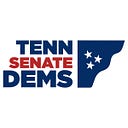Lawmakers call for transparent, community-driven process in mapping new political districts
Census data for drawing new political boundaries arrives this week
NASHVILLE — Tennessee communities should have a voice in mapping the state’s political future for the next decade, lawmakers said Tuesday in a letter to legislative leaders, and citizens should not have to wait until 2022 to see new proposed district lines.
The process of drawing new electoral boundaries for the U.S. House of Representatives and state legislative districts only happens once every 10 years after the U.S. Census releases local data.
While many states have laws that require political boundaries to be drawn with community input, Tennessee’s process is controlled entirely by the majority party in the legislature.
In a letter dated Aug. 10, Democratic leaders in the Tennessee General Assembly urged the Republican speakers of both chambers to commit to an open and transparent process that provides citizens with opportunities to offer feedback on proposed maps.
“Perhaps more than any other single decision, the drawing of district boundaries will shape the policies adopted by the state over the next decade,” the lawmakers wrote. “We believe Tennesseans understand their communities and deserve a voice in how their communities will be represented.”
The letter was signed by the Democratic leaders of both chambers, Sen. Jeff Yarbro (D-Nashville) and Rep. Karen Camper (D-Memphis) as well as both caucus chairs, Sen. Raumesh Akbari (D-Memphis) and Rep. Vincent Dixie (D-Nashville).
In the letter, lawmakers called on the speakers to follow three community-driven principles for drawing Tennessee’s new legislative districts:
- Maintain an open and transparent process. “Citizens deserve a districting process they can understand and trust, as well as information about how they will be able to engage with key decisionmakers. In many states, this process includes a special committee that travels the state hosting public meetings, as well as a website that provides the public with the same updated information available to the legislative decisionmakers.”
- Offer public and community engagement opportunities. “Citizens deserve opportunities, prior to our regular legislative session, to engage on this issue. We would request that a series of public hearings be held across the state, and that these hearings also be broadcast online, and that the General Assembly employ digital tools to permit the public to offer input and even submit district map proposals.”
- Seek public input on the first drafts of maps this fall. “Throughout the nation, it’s become common for citizens and communities to review proposed maps well in advance of final adoption. We would propose making first drafts available to the public this fall in an easily usable format, with updates released prior to any formal consideration. Community leaders and members of the public need time to review maps, offer input, and even suggest or request changes prior to any community districting legislation being voted upon.”
“The community districting process should be among the most public endeavors that our state government undertakes. The General Assembly has access to the technology to make this process transparent and even interactive,” the Democratic leaders wrote. “Far from slowing down the legislative work of drawing new district lines, we believe such efforts would not only build trust but also lead to a stronger final product.”
On Aug. 12, the Census Bureau will publish the first local level results from the 2020 Census, including data on race, ethnicity and the voting-age population.
Changes in population and demographics that have taken place over a decade will be used to draw new federal and state district maps — roughly equal in population.
Earlier this year, the nonpartisan group Think Tennessee wrote about the benefits of a more public and transparent community districting process.
“Opening a window into Tennessee’s redistricting process to allow citizens to meaningfully participate would enhance their trust in the system,” Think wrote. “In a state that consistently ranks near the bottom of the country on voter registration and turnout, redistricting is a key opportunity to deepen civic engagement.”
Think also says Tennesseans historically have had fewer opportunities for public participation, and less access to draft district maps, than people in most other states.
“While most states proactively seek public input in the redistricting process, Tennesseans’ opportunities for engagement previously have been limited to submitting draft maps and sharing their opinions with their legislators,” the nonprofit wrote.
The full letter is included below:
